
Plan de la ville Nouvelle Orléans en l’etat quelle étoit le 30 May 1725, probably New Orleans, Louisiana, or France, 1725. 17 1/2 x 25 3/16". (Courtesy, Bibliothèque nationale de France, FRBNF40608362.)
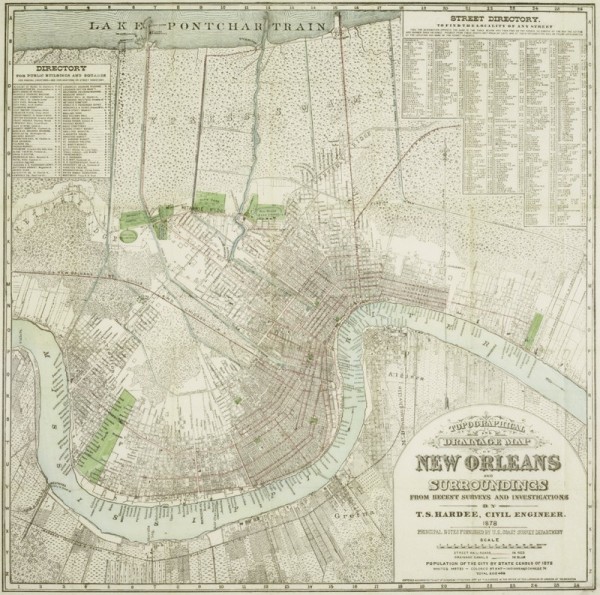
Thomas Sydenham Hardee (1832–1880), Topographic and Drainage Map of New Orleans and Surroundings, ca. 1877. Lithograph with watercolor. 33 5/8 x 32 5/8". (Courtesy, The Historic New Orleans Collection, 00.34 a,b.)

Plate fragment, France, first half of eighteenth century. Tin-glazed earthenware. (Courtesy, Dr. Shannon Dawdy, University of Chicago; photo, Adela Amaral.) This piece, shown in situ, was recovered during excavation at St. Anthony’s Garden, New Orleans, Louisiana.
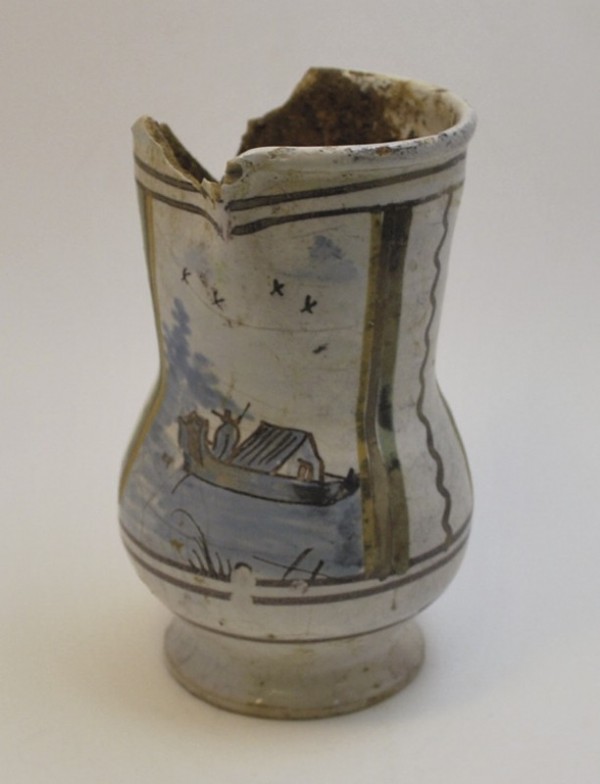
Jug, Rouen, France, ca. 1750–1770. Tin-glazed earthenware. H. 8". (Courtesy, University of New Orleans Archaeology Lab; photo, D. Ryan Gray.)
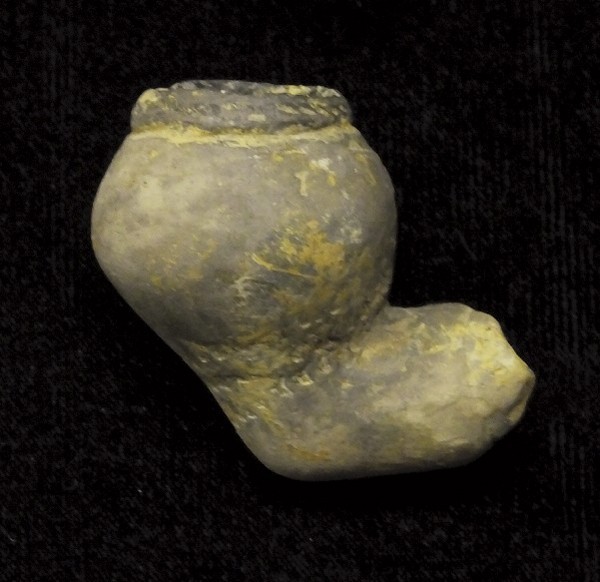
Pipe, Louisiana, ca. 1760–1780. Low-fired earthenware with sandy temper. (Courtesy, University of New Orleans Archaeology Lab; photo, D. Ryan Gray.)

The Black Men of Labor organization is followed by the Treme Brass Band, which is leading a second line of the procession starting at St. Augustine Catholic Church in the Treme on April 15, 2015, for the reburial of human remains recovered from the St. Peter Street Cemetery. (Courtesy, New Orleans Advocate; photo, Eliot Kamenitz.)
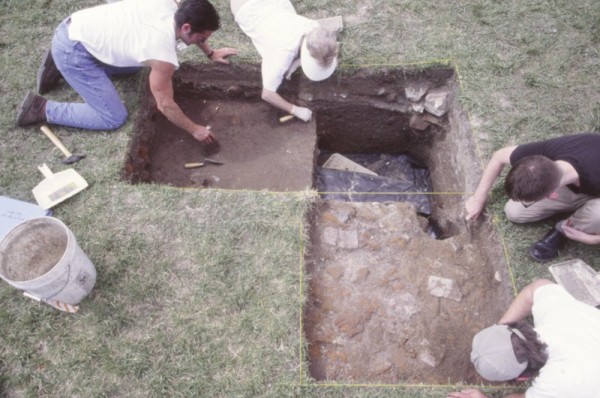
Fieldwork by Greater New Orleans Archaeology Program at St. Augustine site, Morand-Tremé Plantation, 1999. (Courtesy, University of New Orleans Archaeology Lab; photo, Christopher Matthews.)

Bowl fragment, Louisiana, eighteenth century. Lead-glazed earthenware. (Courtesy, Greater New Orleans Archaeology Program; photo, Christopher Matthews.)
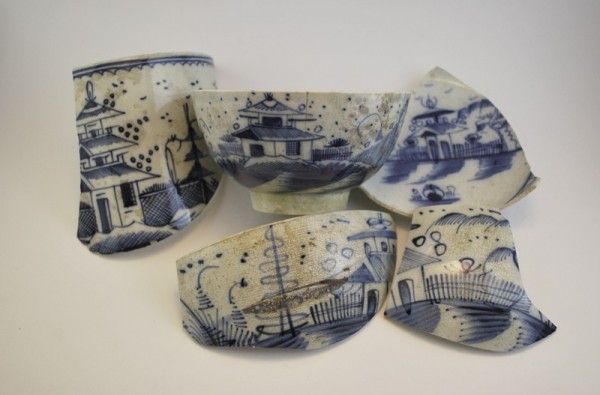
Punch bowls and mug fragments, Staffordshire, England, ca. 1780–1800. China-glaze earthenware D. of bowl (top center) 4 1/2". (Courtesy, University of New Orleans Archaeology Lab; photo, D. Ryan Gray.)
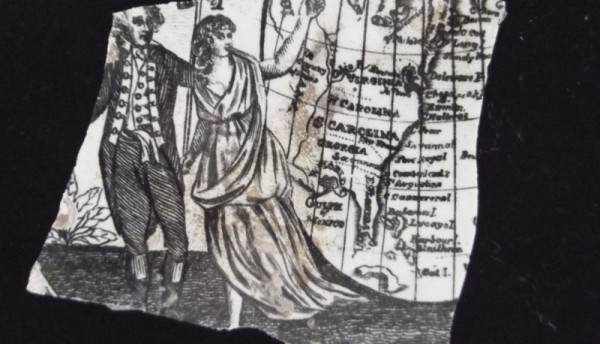
Jug fragment, probably Herculaneum Pottery, Liverpool, England, ca. 1800–1810. Creamware with black transfer print. (Courtesy, University of New Orleans Archaeology Lab; photo, D. Ryan Gray.) This jug fragment was recovered from 810 Royal Street, New Orleans, Louisiana.

Jug, probably Herculaneum Pottery, Liverpool, England, ca. 1800–1810. Creamware with black transfer print. H. 11 1/8". (Courtesy, Winterthur Museum Collection, 2009.0021.010.)
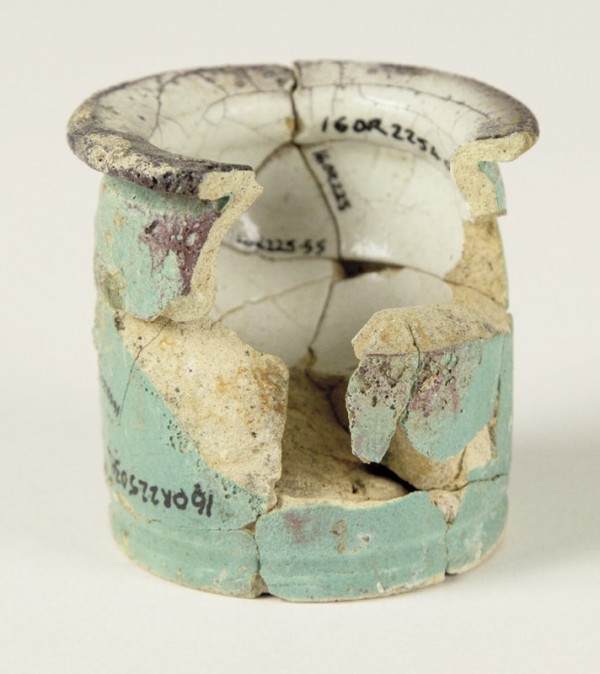
Rouge pots, probably Moustiers, France, late eighteenth or early nineteenth century. Tin-glazed earthenware. (Courtesy, Historic New Orleans Collection.) These examples were recovered from excavations at 535 Conti Street, New Orleans, Louisiana. Such rouge and galley pots with monochrome green and blue exteriors are found throughout the Mississippi Valley, and date even into the early twentieth century.

Rouge pot, probably Moustiers, France, second half of nineteenth century. Tin-glazed earthenware. H. 2". Inscribed: “GELLE Freres,/Parfrs Brevete line/dex vieux Augustins/a Paris.” (Courtesy, University of New Orleans Archaeology Lab; photo, D. Ryan Gray.) Faience rouge pots from the late nineteenth century often have the printed marks of make-up and perfume distributors. This example, recovered from excavations at Square 130 of the Iberville Housing Projects, came from a household in the neighborhood that became the Storyville red-light district (ca. 1898–1917).
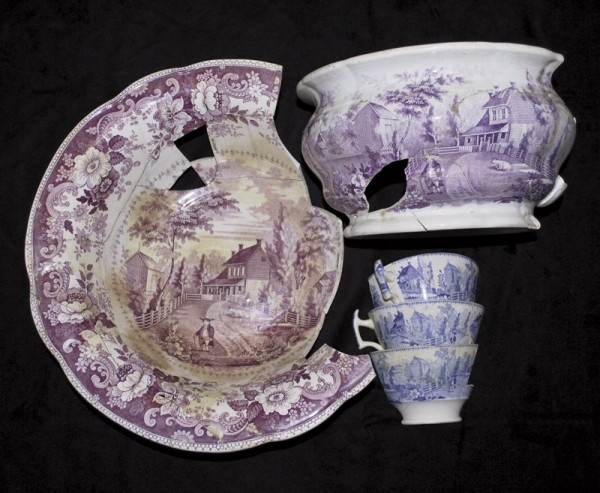
(clockwise) Cups, wash basin, and chamber pot, Joseph Heath and Company, Tunstall, England, ca. 1828–1841. Whiteware. D. of basin 13 1/2". (Courtesy, Earth Search, Inc.; photo, D. Ryan Gray.) Transfer-printed decoration of “The Residence of the Late Richard Jordan, New Jersey”; these pieces were recovered from a privy at 923 Magazine Street, New Orleans, Louisiana.
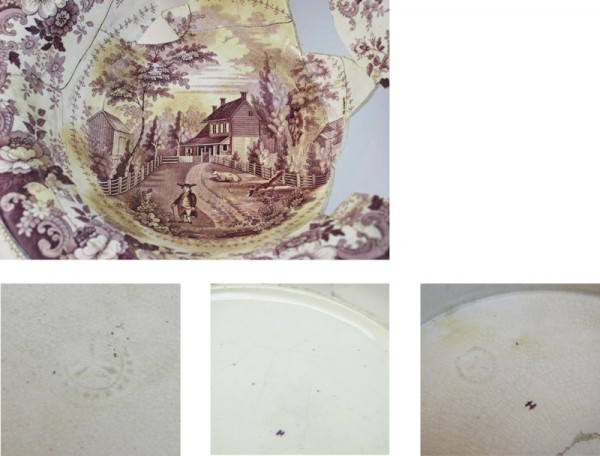
Details of the transfer print, printed mark, and impressed pinwheel mark on the reverse of the basin and chamber pot illustrated in fig. 14. The pinwheel mark sometimes occurs along with a small printed “H” mark, presumably for Heath. The third example here is another transfer-printed vessel attributable to the Heath pottery.
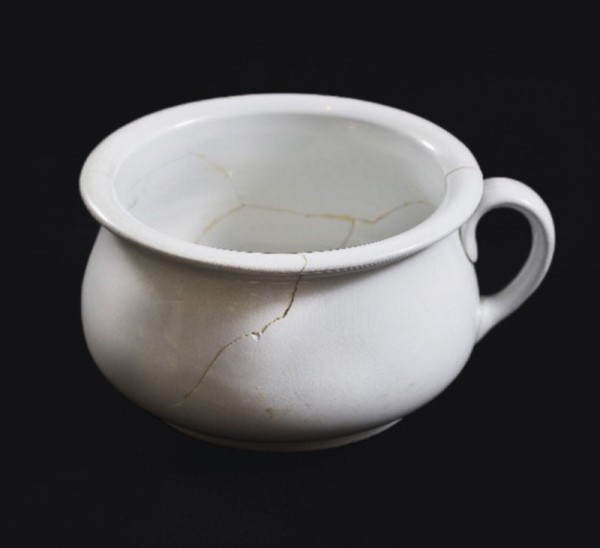
Chamber pot, England, late nineteenth century. Whiteware with transfer print of General Benjamin Butler. Dimensions not recorded. (Courtesy, Alabama Department of Archives and History, Montgomery, Alabama.)

Detail of the transfer print inside the chamber pot illustrated in fig. 16.
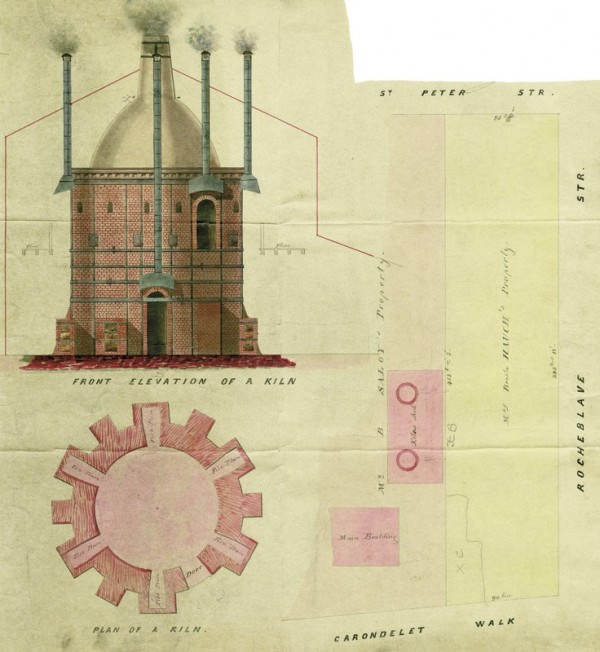
Plan showing the adjoining properties of Mr. Bertrand Saloy and Mrs. B. Hausch by St. Peter Street, Rocheblave Street, and Carondelet Walk, 1880–1885. Ink and watercolor on paper. 19 1/4 x 17 7/8". (Courtesy, Historic New Orleans Collection.)
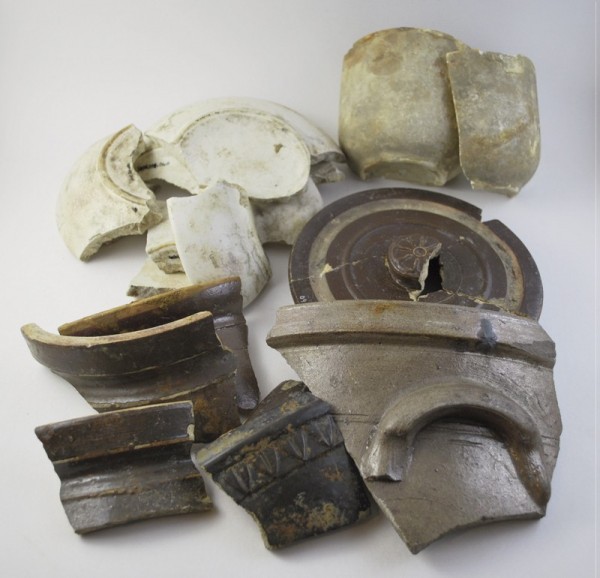
Wasters and examples of wares, Lucien Gex Pottery, New Orleans, Louisiana, ca. 1890. Earthenware and stoneware, some fragments with remnants of Albany-type slip. (Courtesy, Earth Search, Inc.; photo, D. Ryan Gray.)
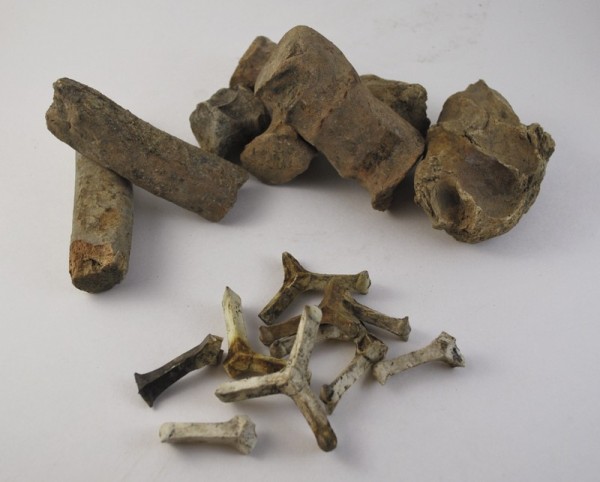
Kiln furniture and test firings, Lucien Gex Pottery, New Orleans, Louisiana, ca. 1890. (Courtesy, Earth Search, Inc.; photo, D. Ryan Gray.)
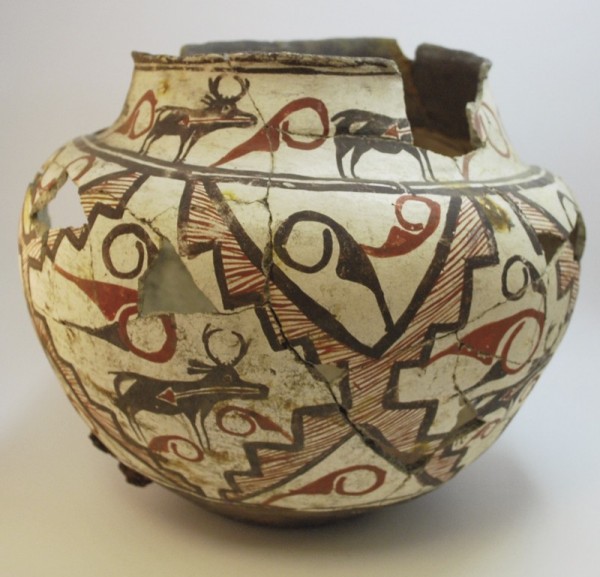
Olla, Zuni Pueblo, ca. 1890s. Earthenware with polychrome hand-painting. H. 10 1/2". (Courtesy, Earth Search, Inc.; photo, D. Ryan Gray.)
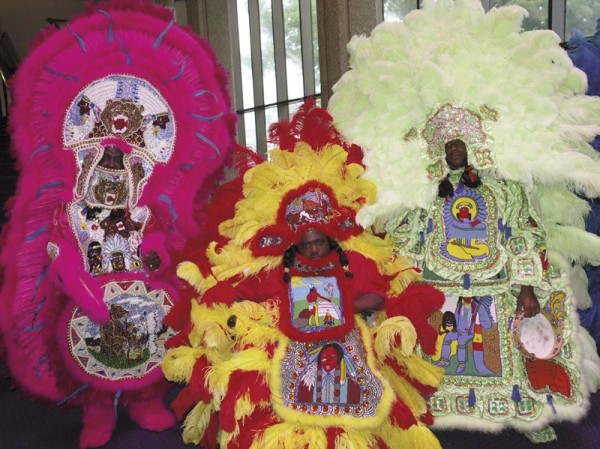
Big Chiefs Tyrone Casby (Mohawk Hunters), Cyril Green (Black Seminoles), and Darin Perry (Wild Red Flame) at a memorial gathering of the Chiefs of the Nation on the fifth anniversary of Hurricane Katrina, organized by New Orleans Mayor Mitch Landrieu at the Mahalia Jackson Theater, New Orleans, 2010. (Photo, Jeffrey Ehrenreich.)
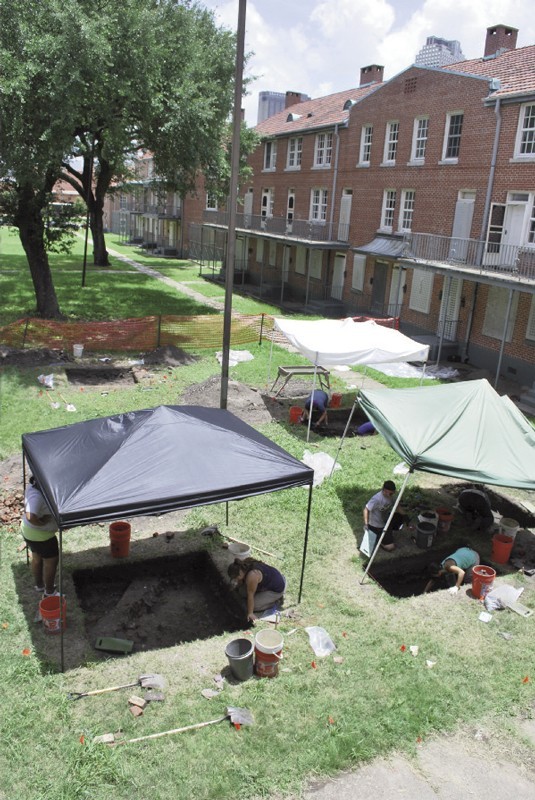
Summer 2013 excavations by the University of New Orleans field school in historical archaeology at Iberville Housing Projects, former location of “Storyville” red-light district, New Orleans, Louisiana. (Photo, D. Ryan Gray.)
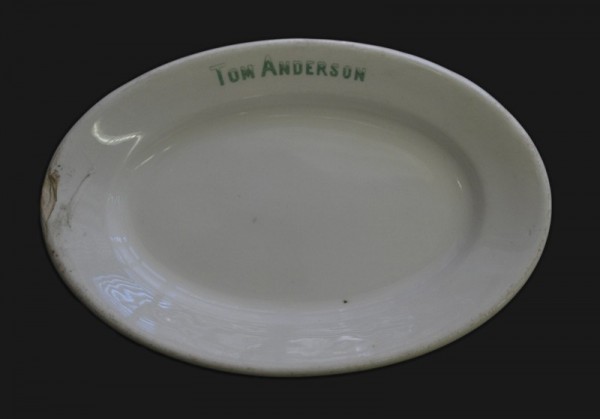
Platter, America, ca. 1898–1917. Porcelaneous stoneware. D. 10 1/2". Overglaze-printed “TOM ANDERSON”; unidentified mark impressed on base. (Courtesy, New Orleans Jazz Club Collections of the Louisiana State Museum; photo, D. Ryan Gray.) Tom Anderson, sometimes referred to as the unofficial mayor of Storyville, operated a saloon and restaurant on Basin Street, the location of some of the district's most famous brothels.

Ring holder, England, ca. 1890. Unglazed porcelain with unidentified registry mark. H. 6 3/4". (Courtesy, University of New Orleans Archaeology Lab; photo, D. Ryan Gray.)
